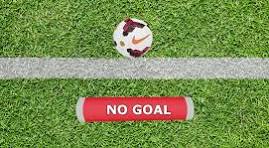
Goal Line Technology Impacts Key World Cup Matches with Precision
Goal Line Technology Plays Decisive Role in World Cup Matches With Accurate and Timely Decisions
Goal line tech proves decisive in several World Cup games, reducing controversy and doubt.
The 2025 FIFA World Cup saw goal line technology (GLT) take center stage, delivering accurate and timely decisions that proved crucial in multiple high stakes matches. The system, introduced to eliminate uncertainty in close scoring situations, once again demonstrated its value by preserving fairness and minimizing controversy. Several matches during the tournament featured razor thin moments where the ball teetered on the line. Thanks to GLT, those decisions were resolved within seconds, ensuring the correct call without disrupting the flow of the game. In a thrilling group stage clash between England and Senegal, a dramatic goal line clearance was ruled as a goal after GLT confirmed the entire ball had crossed the line, a decision that changed the match's momentum and outcome. The device tracks the ball's location in real time by combining high-speed cameras with a central processing unit. Within seconds, a vibration and signal are sent directly to the referee’s watch when a goal is confirmed, removing guesswork and player protests from the equation. Coaches and players across teams praised the system’s consistency and clarity. “It takes the pressure off referees and gives us all confidence that the right decision was made,” said one defender from the Dutch national team. FIFA officials also reaffirmed their commitment to enhancing technology's role in officiating. “Goal line technology has once again proven to be an essential tool in ensuring fairness at the highest level,” stated a FIFA spokesperson. As football continues to evolve, innovations like GLT are helping maintain the integrity of the sport. The 2025 World Cup will be remembered not just for goals and drama, but for the quiet confidence in a system that ensured every goal was counted or not with precision.

Written by Rahul Dev
World Cup Correspondent